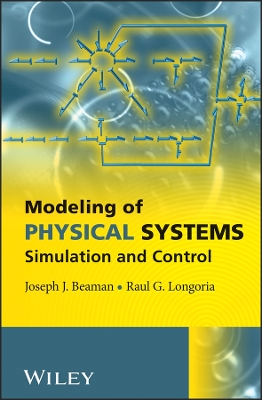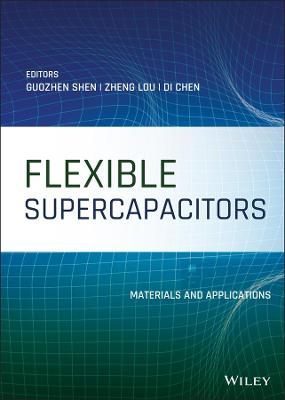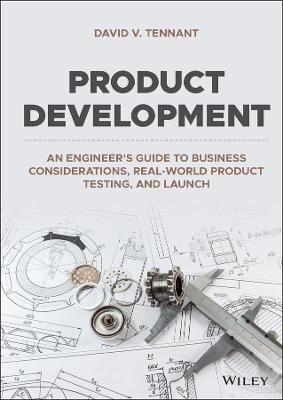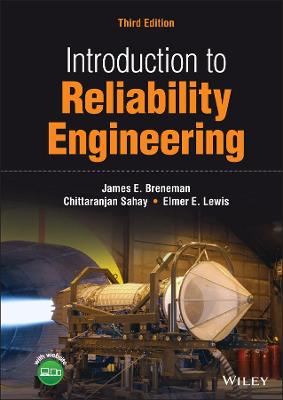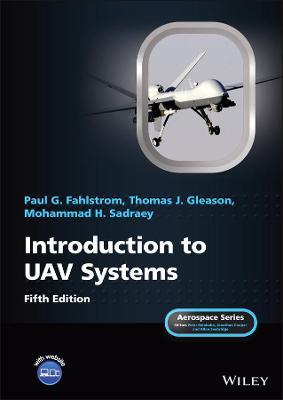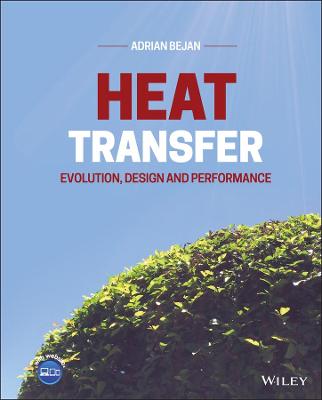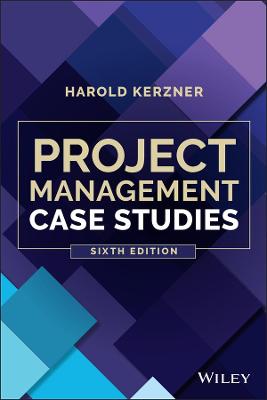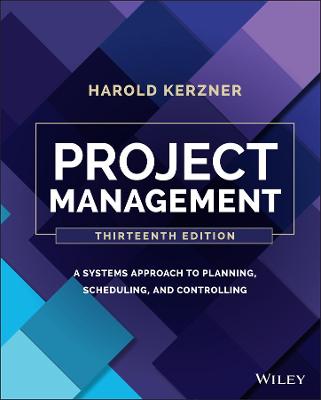Fundamentals of Thermodynamics, International Adaptation
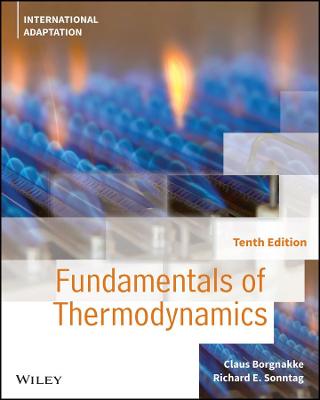 -15%
portes grátis
-15%
portes grátis
Fundamentals of Thermodynamics, International Adaptation
Borgnakke, Claus; Sonntag, Richard E.
John Wiley & Sons Inc
04/2022
736
Mole
Inglês
9781119820772
15 a 20 dias
1318
1 Introduction and Preliminaries
1.1 A Thermodynamic System and the Control Volume
1.2 Macroscopic Versus Microscopic Points of View
1.3 Properties and State of a Substance
1.4 Processes and Cycles
1.5 Units for Mass, Length, Time, and Force
1.6 Specific Volume and Density
1.7 Pressure
1.8 Energy
1.9 Equality of Temperature
1.10 The Zeroth Law of Thermodynamics
1.11 Temperature Scales
1.12 Engineering Applications
Summary
Problems
2 Properties of a Pure Substance
2.1 The Pure Substance
2.2 The Phase Boundaries
2.3 The P-v-T Surface
2.4 Tables of Thermodynamic Properties
2.5 The Two-Phase States
2.6 The Liquid and Solid States
2.7 The Superheated Vapor States
2.8 The Ideal Gas States
2.9 The Compressibility Factor
2.10 Equations of State
2.11 Engineering Applications
Summary
Problems
3 Energy Equation and First Law of Thermodynamics
3.1 The Energy Equation
3.2 The First Law of Thermodynamics
3.3 The Definition of Work
3.4 Work Done at the Moving Boundary of a Simple Compressible System
3.5 Definition of Heat
3.6 Heat Transfer Modes
3.7 Internal Energy-A Thermodynamic Property
3.8 Problem Analysis and Solution Technique
3.9 The Thermodynamic Property Enthalpy
3.10 The Constant-Volume and Constant-Pressure Specific Heats
3.11 The Internal Energy, Enthalpy, and Specific Heat of Ideal Gases
3.12 Nonuniform Distribution of States and Mass
3.13 The Transient Heat Transfer Process
3.15 Engineering Applications
Summary
Problems
4 Energy Analysis for a Control Volume
4.1 Conservation of Mass and the Control Volume
4.2 The Energy Equation for a Control Volume
4.3 The Steady-State Process
4.4 Examples of Steady-State Processes
4.5 Multiple-Flow Devices
4.6 The Transient Flow Process
4.7 Engineering Applications
Summary
Problems
5 The Second Law of Thermodynamics
5.1 Heat Engines and Refrigerators, and Heat Pump
5.2 The Second Law of Thermodynamics
5.3 The Reversible Process
5.4 Factors That Render Processes Irreversible
5.5 The Carnot Cycle
5.6 Two Propositions Regarding the Efficiency of a Carnot Cycle
5.7 The Thermodynamic Temperature Scale
5.8 The Ideal Gas Temperature Scale
5.9 Ideal Versus Real Machines
5.10 The Inequality of Clausius
5.11 Engineering Applications
Summary
Problems
6 Entropy
6.1 Entropy-A Property of a System
6.2 The Entropy of a Pure Substance
6.3 Entropy Change in Reversible Processes
6.4 The Thermodynamic Property Relation
6.5 Entropy Change of a Solid Or Liquid
6.6 Entropy Change of an Ideal Gas
6.7 The Reversible Polytropic Process for an Ideal Gas
6.8 Entropy Change of a Control Mass During an Irreversible Process
6.9 Entropy Generation and the Entropy Equation
6.10 Principle of the Increase of Entropy
6.11 Entropy Balance Equation in a Rate Equation
6.12 Some General Comments About Entropy and Chaos
Summary
Problems
7 Entropy Analysis for a Control Volume
7.1 The Entropy Balance Equation for a Control Volume
7.2 The Steady-State Process and the Transient Process
7.3 The Steady-State Single-Flow Process
7.4 Principle of the Increase of Entropy
7.5 Engineering Applications; Energy Conservation and Device Efficiency
Summary
Problems
8 Exergy
8.1 Exergy, Reversible Work, and Irreversibility
8.2 Exergy and Its Balance Equation
8.3 The Second Law Efficiency
8.4 Engineering Applications
Summary
Problems
9 Gas Power and Refrigeration Systems
9.1 Introduction to Power Systems
9.2 Air-Standard Power Cycles
9.3 The Stirling Cycle and the Ericsson Cycles
9.4 Reciprocating Engine Power Cycles
9.5 The Otto Cycle
9.6 The Diesel Cycle
9.7 The Dual Cycle
9.8 The Atkinson and Miller Cycles
9.9 The Brayton Cycle
9.10 The Simple Gas-Turbine Cycle With a Regenerator
9.11 Gas-Turbine Power Cycle Configurations
9.12 The Air-Standard Cycle for Jet Propulsion
9.13 Introduction to Refrigeration Systems
9.14 The Air-Standard Refrigeration Cycle
Summary
Problems
10 Vapor Power and Refrigeration Systems
10.1 The Simple Rankine Cycle
10.2 Effect of Pressure and Temperature on the Rankine Cycle
10.3 The Reheat Cycle
10.4 The Regenerative Cycle and Feedwater Heaters
10.5 Deviation of Actual Cycles From Ideal Cycles
10.6 Combined Heat and Power: Other Configurations
10.7 The Vapor-Compression Refrigeration Cycle
10.8 Working Fluids for Vapor-Compression Refrigeration Systems
10.9 Deviation of the Actual Vapor-Compression Refrigeration Cycle From the Ideal Cycle
10.10 Refrigeration Cycle Configurations
10.11 The Absorption Refrigeration Cycle
10.12 Exergy Analysis of Cycles
10.13 Combined-Cycle Power and Refrigeration Systems
Summary
Problems
11 Gas Mixtures
11.1 General Considerations and Mixtures of Ideal Gases
11.2 A Simplified Model of a Mixture Involving Gases and a Vapor
11.3 The Energy Equation Applied To Gas-Vapor Mixtures
11.4 The Adiabatic Saturation Process
11.5 Engineering Applications-Wet-Bulb and Dry-Bulb Temperatures and the Psychrometric Chart
Summary
Problems
12 Thermodynamic Relations
12.1 The Clapeyron Equation
12.2 Mathematical Relations for a Homogeneous Phase
12.3 The Maxwell Relations
12.4 Thermodynamic Relations Involving Enthalpy, Internal Energy, and Entropy
12.5 Volume Expansivity and Isothermal and Adiabatic Compressibility
12.6 Real-Gas Behavior and Equations of State
12.7 The Generalized Chart for Changes of Enthalpy At Constant Temperature
12.8 The Generalized Chart for Changes of Entropy At Constant Temperature
12.9 The Property Relation for Mixtures
12.10 Pseudopure Substance Models for Real Gas Mixtures
12.11 Engineering Applications
Summary
Problems
13 Chemical Reactions
13.1 Fuels
13.2 The Combustion Process
13.3 Enthalpy of Formation
13.4 Energy Analysis of Reacting Systems
13.5 Enthalpy and Internal Energy of Combustion; Heating Value
13.6 Adiabatic Flame Temperature
13.7 The Third Law of Thermodynamics and Absolute Entropy
13.8 Second-Law Analysis of Reacting Systems
13.9 Fuel Cells
13.10 Engineering Applications
Summary
Problems
14 Introduction to Phase and Chemical Equilibrium
14.1 Requirements for Equilibrium
14.2 Equilibrium Between Two Phases of a Pure Substance
14.3 Metastable Equilibrium
14.4 Chemical Equilibrium
14.5 Simultaneous Reactions
14.6 Coal Gasification
14.7 Ionization
14.8 Engineering Applications
Summary
Problems
15 Compressible Flow
15.1 Stagnation Properties
15.2 The Momentum Equation for a Control Volume
15.3 Adiabatic, One-Dimensional, Steady-State Flow of an Incompressible Fluid Through a Nozzle
15.4 Velocity of Sound in an Ideal Gas
15.5 Reversible, Adiabatic, One-Dimensional Flow of an Ideal Gas Through a Nozzle
15.6 Mass-Flow Rate of an Ideal Gas Through an Isentropic Nozzle
15.7 Normal Shock in an Ideal Gas Flowing Through a Nozzle
15.8 Nozzle and Diffuser Coefficients
Summary
Problems
Contents of Appendix
Appendix A SI Units: Single-State Properties
Appendix B SI Units: Thermodynamic Tables
Appendix C Ideal Gas Specific Heat
Appendix D Equations of State
Appendix E Figures
Index
1 Introduction and Preliminaries
1.1 A Thermodynamic System and the Control Volume
1.2 Macroscopic Versus Microscopic Points of View
1.3 Properties and State of a Substance
1.4 Processes and Cycles
1.5 Units for Mass, Length, Time, and Force
1.6 Specific Volume and Density
1.7 Pressure
1.8 Energy
1.9 Equality of Temperature
1.10 The Zeroth Law of Thermodynamics
1.11 Temperature Scales
1.12 Engineering Applications
Summary
Problems
2 Properties of a Pure Substance
2.1 The Pure Substance
2.2 The Phase Boundaries
2.3 The P-v-T Surface
2.4 Tables of Thermodynamic Properties
2.5 The Two-Phase States
2.6 The Liquid and Solid States
2.7 The Superheated Vapor States
2.8 The Ideal Gas States
2.9 The Compressibility Factor
2.10 Equations of State
2.11 Engineering Applications
Summary
Problems
3 Energy Equation and First Law of Thermodynamics
3.1 The Energy Equation
3.2 The First Law of Thermodynamics
3.3 The Definition of Work
3.4 Work Done at the Moving Boundary of a Simple Compressible System
3.5 Definition of Heat
3.6 Heat Transfer Modes
3.7 Internal Energy-A Thermodynamic Property
3.8 Problem Analysis and Solution Technique
3.9 The Thermodynamic Property Enthalpy
3.10 The Constant-Volume and Constant-Pressure Specific Heats
3.11 The Internal Energy, Enthalpy, and Specific Heat of Ideal Gases
3.12 Nonuniform Distribution of States and Mass
3.13 The Transient Heat Transfer Process
3.15 Engineering Applications
Summary
Problems
4 Energy Analysis for a Control Volume
4.1 Conservation of Mass and the Control Volume
4.2 The Energy Equation for a Control Volume
4.3 The Steady-State Process
4.4 Examples of Steady-State Processes
4.5 Multiple-Flow Devices
4.6 The Transient Flow Process
4.7 Engineering Applications
Summary
Problems
5 The Second Law of Thermodynamics
5.1 Heat Engines and Refrigerators, and Heat Pump
5.2 The Second Law of Thermodynamics
5.3 The Reversible Process
5.4 Factors That Render Processes Irreversible
5.5 The Carnot Cycle
5.6 Two Propositions Regarding the Efficiency of a Carnot Cycle
5.7 The Thermodynamic Temperature Scale
5.8 The Ideal Gas Temperature Scale
5.9 Ideal Versus Real Machines
5.10 The Inequality of Clausius
5.11 Engineering Applications
Summary
Problems
6 Entropy
6.1 Entropy-A Property of a System
6.2 The Entropy of a Pure Substance
6.3 Entropy Change in Reversible Processes
6.4 The Thermodynamic Property Relation
6.5 Entropy Change of a Solid Or Liquid
6.6 Entropy Change of an Ideal Gas
6.7 The Reversible Polytropic Process for an Ideal Gas
6.8 Entropy Change of a Control Mass During an Irreversible Process
6.9 Entropy Generation and the Entropy Equation
6.10 Principle of the Increase of Entropy
6.11 Entropy Balance Equation in a Rate Equation
6.12 Some General Comments About Entropy and Chaos
Summary
Problems
7 Entropy Analysis for a Control Volume
7.1 The Entropy Balance Equation for a Control Volume
7.2 The Steady-State Process and the Transient Process
7.3 The Steady-State Single-Flow Process
7.4 Principle of the Increase of Entropy
7.5 Engineering Applications; Energy Conservation and Device Efficiency
Summary
Problems
8 Exergy
8.1 Exergy, Reversible Work, and Irreversibility
8.2 Exergy and Its Balance Equation
8.3 The Second Law Efficiency
8.4 Engineering Applications
Summary
Problems
9 Gas Power and Refrigeration Systems
9.1 Introduction to Power Systems
9.2 Air-Standard Power Cycles
9.3 The Stirling Cycle and the Ericsson Cycles
9.4 Reciprocating Engine Power Cycles
9.5 The Otto Cycle
9.6 The Diesel Cycle
9.7 The Dual Cycle
9.8 The Atkinson and Miller Cycles
9.9 The Brayton Cycle
9.10 The Simple Gas-Turbine Cycle With a Regenerator
9.11 Gas-Turbine Power Cycle Configurations
9.12 The Air-Standard Cycle for Jet Propulsion
9.13 Introduction to Refrigeration Systems
9.14 The Air-Standard Refrigeration Cycle
Summary
Problems
10 Vapor Power and Refrigeration Systems
10.1 The Simple Rankine Cycle
10.2 Effect of Pressure and Temperature on the Rankine Cycle
10.3 The Reheat Cycle
10.4 The Regenerative Cycle and Feedwater Heaters
10.5 Deviation of Actual Cycles From Ideal Cycles
10.6 Combined Heat and Power: Other Configurations
10.7 The Vapor-Compression Refrigeration Cycle
10.8 Working Fluids for Vapor-Compression Refrigeration Systems
10.9 Deviation of the Actual Vapor-Compression Refrigeration Cycle From the Ideal Cycle
10.10 Refrigeration Cycle Configurations
10.11 The Absorption Refrigeration Cycle
10.12 Exergy Analysis of Cycles
10.13 Combined-Cycle Power and Refrigeration Systems
Summary
Problems
11 Gas Mixtures
11.1 General Considerations and Mixtures of Ideal Gases
11.2 A Simplified Model of a Mixture Involving Gases and a Vapor
11.3 The Energy Equation Applied To Gas-Vapor Mixtures
11.4 The Adiabatic Saturation Process
11.5 Engineering Applications-Wet-Bulb and Dry-Bulb Temperatures and the Psychrometric Chart
Summary
Problems
12 Thermodynamic Relations
12.1 The Clapeyron Equation
12.2 Mathematical Relations for a Homogeneous Phase
12.3 The Maxwell Relations
12.4 Thermodynamic Relations Involving Enthalpy, Internal Energy, and Entropy
12.5 Volume Expansivity and Isothermal and Adiabatic Compressibility
12.6 Real-Gas Behavior and Equations of State
12.7 The Generalized Chart for Changes of Enthalpy At Constant Temperature
12.8 The Generalized Chart for Changes of Entropy At Constant Temperature
12.9 The Property Relation for Mixtures
12.10 Pseudopure Substance Models for Real Gas Mixtures
12.11 Engineering Applications
Summary
Problems
13 Chemical Reactions
13.1 Fuels
13.2 The Combustion Process
13.3 Enthalpy of Formation
13.4 Energy Analysis of Reacting Systems
13.5 Enthalpy and Internal Energy of Combustion; Heating Value
13.6 Adiabatic Flame Temperature
13.7 The Third Law of Thermodynamics and Absolute Entropy
13.8 Second-Law Analysis of Reacting Systems
13.9 Fuel Cells
13.10 Engineering Applications
Summary
Problems
14 Introduction to Phase and Chemical Equilibrium
14.1 Requirements for Equilibrium
14.2 Equilibrium Between Two Phases of a Pure Substance
14.3 Metastable Equilibrium
14.4 Chemical Equilibrium
14.5 Simultaneous Reactions
14.6 Coal Gasification
14.7 Ionization
14.8 Engineering Applications
Summary
Problems
15 Compressible Flow
15.1 Stagnation Properties
15.2 The Momentum Equation for a Control Volume
15.3 Adiabatic, One-Dimensional, Steady-State Flow of an Incompressible Fluid Through a Nozzle
15.4 Velocity of Sound in an Ideal Gas
15.5 Reversible, Adiabatic, One-Dimensional Flow of an Ideal Gas Through a Nozzle
15.6 Mass-Flow Rate of an Ideal Gas Through an Isentropic Nozzle
15.7 Normal Shock in an Ideal Gas Flowing Through a Nozzle
15.8 Nozzle and Diffuser Coefficients
Summary
Problems
Contents of Appendix
Appendix A SI Units: Single-State Properties
Appendix B SI Units: Thermodynamic Tables
Appendix C Ideal Gas Specific Heat
Appendix D Equations of State
Appendix E Figures
Index


